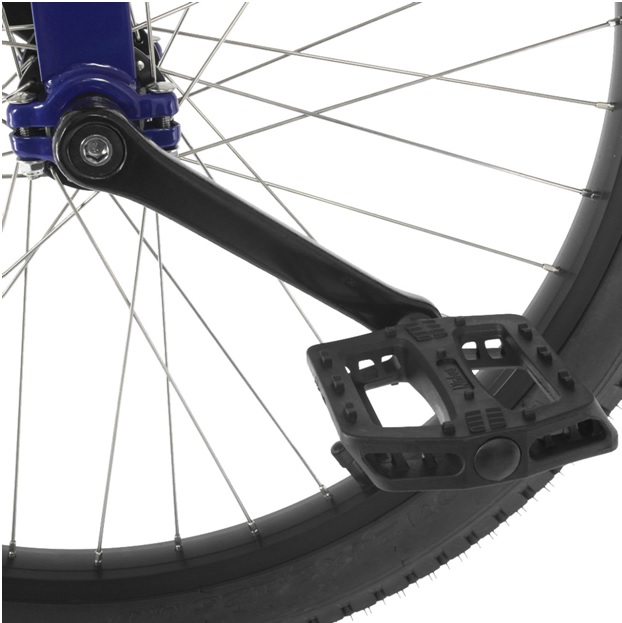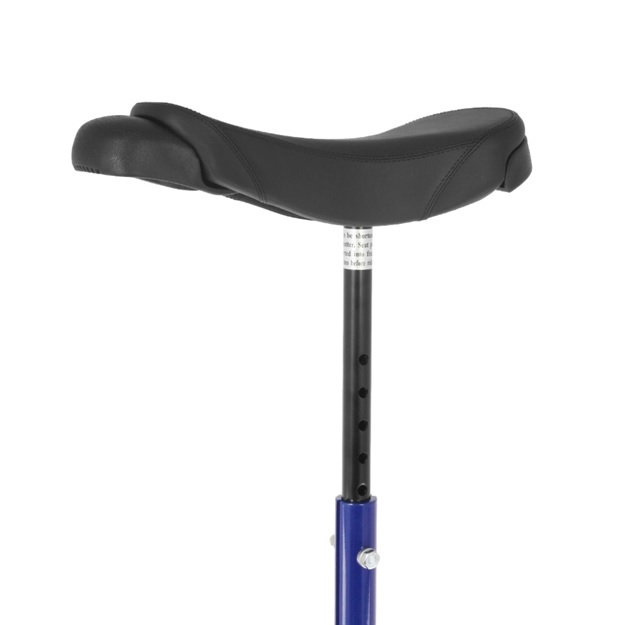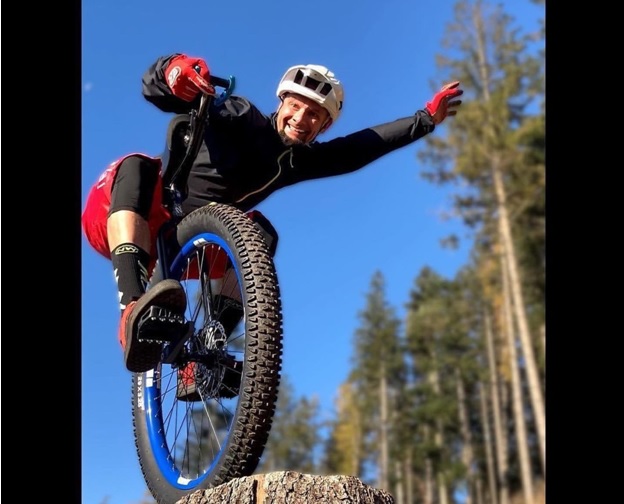Assembling a Schwinn Retro Unicycle? Heed This Advice
11/20/23
Just bought a Schwinn retro unicycle from us? If you need a little help with assembly, feel free to reach out to us directly at 678-494-4962 or consult our full collection of unicycle build/assembly reference materials via the previous link.
But, whatever you do, make sure you hear what we have to say about assembly. It’s not so difficult to put together a unicycle, but there are a few things that can go wrong, such as…
Putting the Cranks on the Wrong Sides (Or Riding with Loose Cranks)
This one’s probably culprit number one. You can’t just put the crank arms on any old side; there are right and left crank arms and they must be installed properly because the threads on both sides are not cross-compatible.
If you don’t put them on the right sides, at best you’ll be loosening the crank arms with every revolution, and at worst, if you ride with loose cranks, you will strip out the threads, ruining the crank arms and the hub axle interface.
If you’re not sure, and the unicycle’s not clearly marked with a left and right side, look at the relief cut into the frame where the seatpost clamp goes. That’s the back of the unicycle.

Riding with Loose Pedals
Riding with loose pedals will also damage the cranks. Make sure you use the right tool to tighten the pedals - a unicycle pedal wrench.
The right size is 15mm but not just any 15mm wrench will do, and neither will an adjustable wrench, even if set to the right size.
There just isn’t enough space between the pedal and crank arm to properly tighten the pedals without the right wrench. An adjustable wrench’s (or a standard 15mm’s) jaws are too thick and will bind in the gap between them, and you’ll think the pedals are tight, but they won’t be.
If they’re loose, tighten immediately.
Over-Tightening (or Under-Tightening) the Bearing Holder Bolts
If your bearing is not installed properly, and either over or under-tightened, the wheel will not turn properly.
When installing the bearings, make sure to tighten them appropriately. Unfortunately, there is no set torque specification we can offer, but we do have a test you can perform to see if they’re too tight.
Once installed, invert the unicycle and set it on its saddle. Run the wheel with your hand and let it spin. If it stops after 2 to 3 revolutions, the bearing bolts are too tight. Loosen them before riding, as if they remain too tight, the outer bearing race will crack and the bearing will be destroyed.
Conversely, if the wheel spins for a long time without slowing down, the bearing bolts aren’t tight enough. Tighten until it spins a handful of time before slowly coming to a stop.
A good rule of thumb is to check to see that the bearing caps have an even amount of space from front to back.
You can also perform the “rattle check.”
Perform the “Rattle Check”
Pick the unicycle up off the ground and hold it by the saddle. Lower it to about 2” from the ground, then let it drop.
If you hear something rattle, that means something’s loose. It could be the crank arms, it could be the pedals, it could even be the bearings.
Whatever it is, you need to find it. Give the unicycle the once over and make sure everything is properly tightened.
Putting the Saddle on the Wrong Way
Not a huge deal, but if you want to be comfortable, ride the unicycle properly by making sure the saddle’s facing the right way. The skinny part goes in front. Also, use the check we called out previously; look at the frame, and check for the relief (slit) where the seatpost clamp goes. That’s the back of the machine.
Not Adjusting the Seat Height Properly

Not adjusting the seat height properly won’t cause any damage to the unicycle but it will make your time in the saddle less enjoyable. For tips on how to adjust it and how to know it’s properly adjusted, read our previous blog, Adjusting Unicycle Saddle Height: What You Need to Know.
Routine Maintenance
One more tip before we cut you loose to enjoy that Schwinn retro unicycle (because we justifiably believe you’ve assembled it properly at this point!) is this: do not neglect routine maintenance.
Unicycle are simple machines, but they are still machines, and all machines require routine maintenance. The main things are making sure all fasteners are properly tightened and that the tire is properly inflated. For more information on proper tire pressure, please consult the following article: Setting Your Unicycle’s Tire Pressure: Getting It Right.
Not Wearing Safety Gear

A final word to the wise: though this has nothing to do with assembly or maintenance, you’re doing it wrong if you don’t wear unicycle safety gear. This includes a helmet, and for conscientious riders, knee, elbow and wrist pads.
Treat Yourself to a New Schwinn Retro Unicycle
That’s the bulk of what can go wrong when assembling a Schwinn retro unicycle (or any, really). It’s not rocket science, so we’re confident you can take it on - but if you have questions, feel free to reach out to us. We’d be happy to help.

